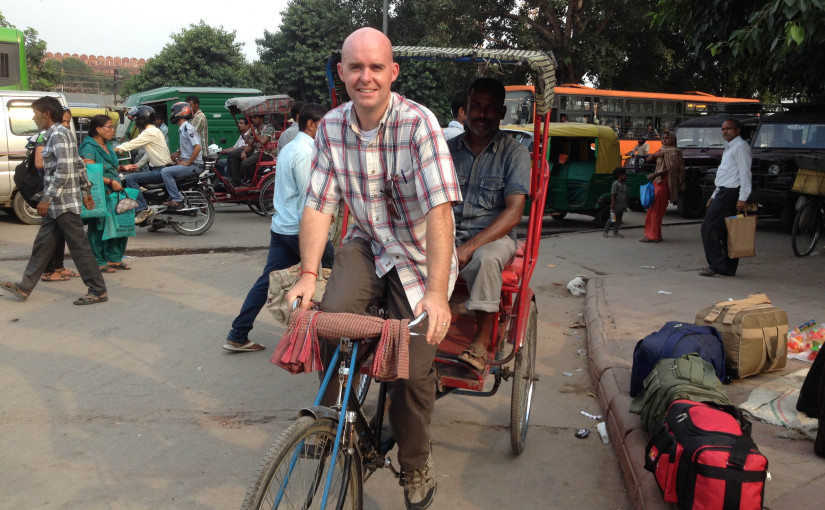There are four things I remember from reading Traffic: Why We Drive the Way We Do (and What It Says About Us) –
- Never make eye contact at an intersection in Mexico City
- Late merging is actually the most efficient use of road space even though it infuriates everyone else
- Risking your life to teach a bad driver a lesson is illogical (you’ll never see them again) but it may benefit the rest of society
- One in 10 traffic fatalities worldwide happens in New Delhi, India
That last point is of particular interest to me because I visit New Delhi once or twice a year for work. Traffic there is fascinating! I pretty much hold my camera out the window the whole commute, trying (in vain, generally) to capture some of the chaos for later.

You desensitize to it slowly over time. After a dozen trips to India, the driver will still suddenly stop so I can get a picture of another pig in the road. “No, I’m good. Enough pigs,” I say, pointing to my camera to show where all the digital pigs are stored. I think he’s a little sad it has become routine.
Much of the danger and excitement of New Delhi traffic is due to the variety of road users. On a U.S. interstate, you might have variance of 10mph across vehicles sharing the road. In India, you have cars, motorbikes, scooters, pedal bikes, pull rickshaws, bike rickshaws, auto rickshaws (tuk tuks), big trucks, buses, cows, buffalo, pigs, dogs, and endless pedestrians.
Bike helmets are required in big cities (“even for women“, the signs say), but you rarely see them. If you do, it’s only for the driver and not the passenger. It’s common to see a full family on one scooter or bike, with an infant on the lap of the driver.
So much honking! It almost makes you laugh how incessant it is. Honking is a signal, not necessarily a warning. “I’m coming up behind you” or “I plan to pass” or “I don’t plan to stop” or “I notice you have an American tourist in your car”. I’m starting to notice nuances in the length of the honk — there seem to be nice ones and mean ones. Most of the trucks have beautifully-painted “Honk Please” and/or “Use Dippers” (flash your brights) on the back.
Some road signs plead “Lane Driving is Sane Driving” (or the less-rhyming “Safe Driving”). Drivers tend to use the middle of the road when it’s clear, moving to the left only when oncoming traffic requires it. I see a lot of lane-straddling on multi-lane roads.
When a road widens before an intersection, vehicles spread out to consume all available space. Even though they’ll have to squish back down to a lane or two after the intersection. And it works fine. I can’t see this working in the U.S. without gun shots.
Throw in some police barriers, pot holes and sink holes, and you have the makings of an entertaining daily commute.

What strikes me most is the lack of anger and frustration. I’ve seen one fist fight and one fender bender in a dozen visits, but their scrappy driving methods work surprisingly well. You can get very resourceful when rules are just guidelines. When a one-way side road backed up due to a wreck, a couple of drivers ran to nearby shops for scrap metal and created a ramp so cars could drive over the median and borrow a lane from the other-direction road. The other drivers just shifted over — it was no big deal to have hundreds of cars driving the wrong way.
I used to play the video game California Speed at a friend’s house and had to concentrate on the drive home to suppress the urge to jump ramps and mount sidewalks like you could in the game. That’s how it is when I get back from India. Here in the U.S., roads are for cars and sidewalks are for pedestrians. And you can only honk when you really have something to say (and when your wife is not in the car). How boring.
[amazon template=image&asin=0307277194]


































































Leave a Reply